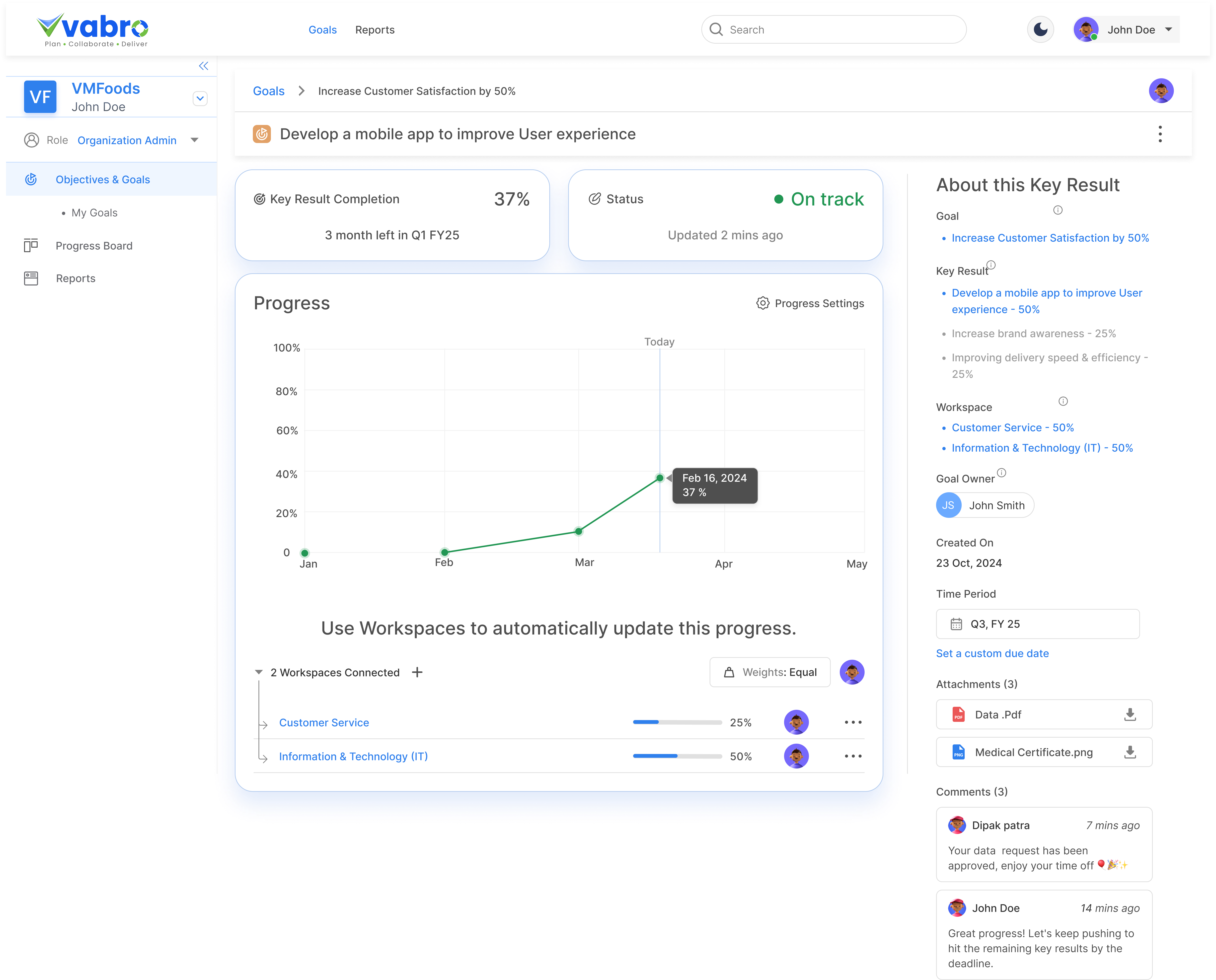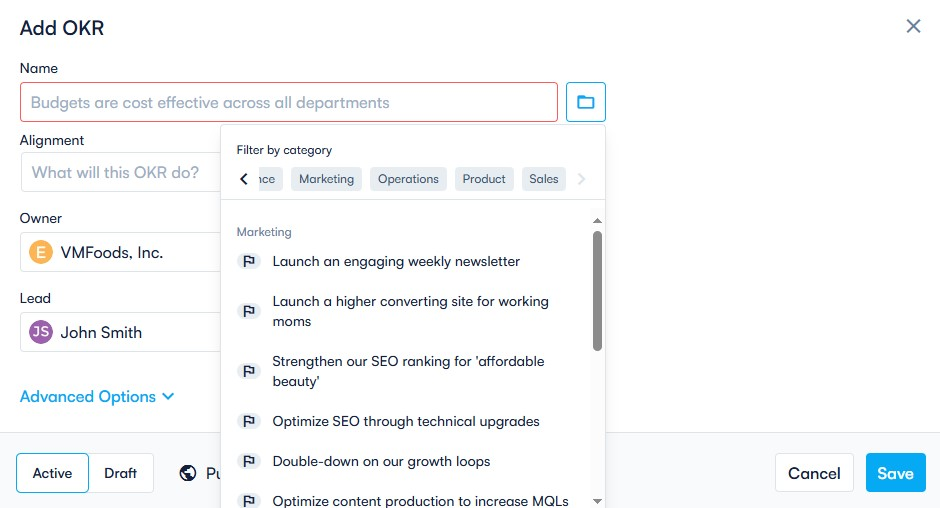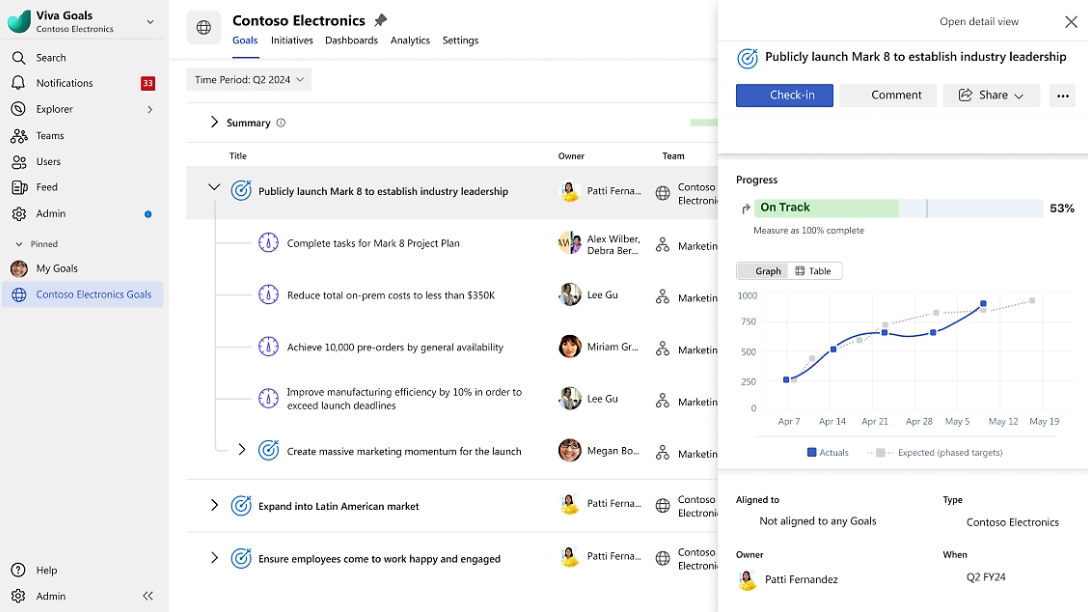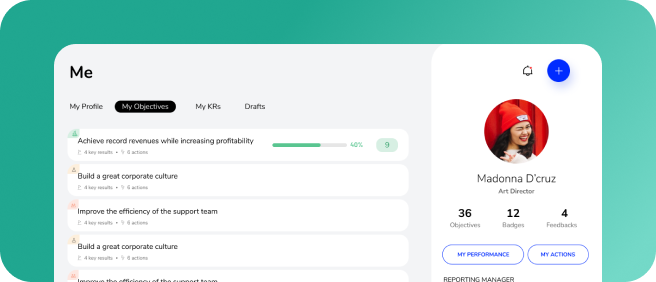Cascading OKRs means breaking down company-wide objectives into departmental, team, and individual goals. This ensures alignment at every level.
a. Levels of Cascading:
Company-Level OKRs: Broad, strategic objectives (e.g., “Expand Market Share”).
Figure 4.25 shows a company-level OKR in an AI-enabled OKR tool:

Figure 4.25: Company-level OKRs (Source: Vabro)
Figure 4.25 shows displays Vabro's OKR dashboard, tracking company-level key results and goal progress. It features real-time updates, workspace integration, performance metrics, and collaboration tools for effective objective management.
Department-Level OKRs: Support company OKRs (e.g., Marketing increases brand awareness).
Figure 4.26 shows a department-level OKR in an AI-enabled OKR tool:

Figure 4.26: Department-level OKR (Source: Perdoo)
Figure 4.26 showcases OKR interface in Perdoo, where users can define department-level objectives and key results. It includes alignment options, category filtering, ownership assignment, and status selection.
Team-Level OKRs: Focus on specific functions (e.g., Content team boosts organic traffic).
Figure 4.27 shows a team-level OKR in an AI-enabled OKR tool:

Figure 4.27: Team-level OKRs (Source: Microsoft Viva)
Figure 4.27 showcases team-level OKRs in Microsoft Viva, displaying a structured goal-tracking system for Contoso Electronics team. It includes objectives, key results, owners, progress tracking, and alignment details.
Individual OKRs: Personal goals aligned with team objectives.
Figure 4.28 shows an individual-level OKR in an AI-enabled OKR tool:

Figure 4.28: Individual-level OKR (Source: JOP)
Figure 4-28 above shows an individual's goal-tracking dashboard with objectives, key results, progress bars, and personal performance metrics.
b. Cascading Methods:
Top-Down: Leadership sets objectives, which are broken down by departments and teams.
Bottom-Up: Teams propose objectives aligned with company goals.
Bidirectional: A mix of top-down directives and bottom-up input.
